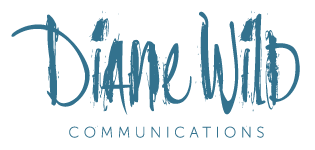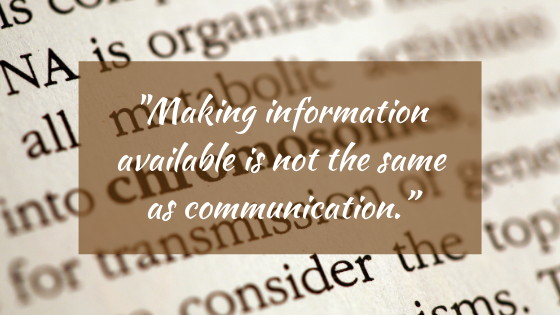I’ve consumed a lot of professional development opportunities in my life, some meaty, some empty calories. One that stuck to my ribs was a workshop with Dr. Vincent Covello, organized by my boss at the health care organization I worked for at the time (thanks Helen!).
Covello is a director of the Center for Risk Communication whose work on message mapping and crisis communications is literally life-saving: he’s worked on conveying timely, accurate information in public health crises, and teaches other organizations how to do the same.
Even though crisis communications isn’t the path I’ve chosen, his work resonated with me and I always aim to apply the concepts in my corporate communications work and writing.
[There’s a lot more to his work by the way – I’m about to more narrowly focus on the importance of plain language in a health care context (spoiler alert).]
Considering health literacy
Working in health care often means communicating to people in times of distress. It also means swimming in a sea of acronyms, jargon and euphemisms that health care workers may think are common knowledge.
Covello’s research has found that in high stress situations, we experience an up to 80% reduction in processing information compared to low-stress times. Our reading comprehension goes down by up to four grade levels.
What does that mean in, er, plain language?
One of my favourite tricks when interviewing an expert is to tell them to talk to me like I’m seven years old. When one electrical engineer answered a question about solar converters by talking about imaginary numbers and leaping to the whiteboard to draw charts and graphs, I joked: “OK, now talk to me like I’m five.”
I can do that in a professional context, where I’m coming in to help organizations simplify complex topics. That’s what I’m paid to do. In a personal context, if I’m sitting in front of a doctor feeling vulnerable, I’m less prone to insist on clarification. (Though I might if she started talking about imaginary numbers.)
Covello’s research says I’m also less able to understand what is being said to me – up to 80% less. Imagine I’ve just had devastating news. I may not be in the middle of a public health crisis, but a personal crisis produces the same kind of mental noise that prevents us from absorbing information.
Another of Covello’s principles is to lead with empathy. He believes that half of our trust is born from that; we don’t care what you know until we know that you care. I might be in the middle of one of the worst moments of my life while the doctor is in the middle of her fifth such conversation since lunch. The chasm between us is not going to be bridged with medical terminology or instructions but with empathy.
Even outside of crises, plain language in health care contexts is crucial. Consider these examples:
- 43% of working-age adults in England struggle to understand instructions to calculate a childhood paracetamol dose. (Paracetamol=acetaminophen=harmful at a dose not too far above the maximum).
- Say I’m told I have an appointment for an x-ray, but when I arrive at the hospital I can’t find any signage for the x-ray department. I don’t realize it’s called radiology so I’m confused, frustrated, and possibly late, putting me in an even more high-stress state.
Information or communication?
How many times are we encouraged to just create that video, write that post, send out that press release, without getting to the why, the who, the when, which should lead to the best how? To use the terminology of the experts rather than the audience? Years later I still regret losing an argument to change “concurrent disorders” in a public communication to something more easily understood by a public audience.
“Making information available is not the same as communication.”
Our job as communicators isn’t to disseminate information, it’s to facilitate understanding. A good start is to incorporate plain language and health literacy principles in our communications strategies, from goal-setting to tactics to leadership coaching to evaluation.
There’s so much more to health literacy and plain language than one blog post can cover, but being aware is the first step, and there are resources available to help guide us. Covello’s message mapping techniques can help. The NHS in Scotland runs The Health Literacy Place that includes techniques to ensure people understand what their health professionals are telling them as well as a plain language thesaurus.
Do you have other favourite resources?



Bravo, Diane! Well said. My Monday morning enthusiasm is bubbling, and it’s not because of the coffee. And thanks for the additional links; good stuff.